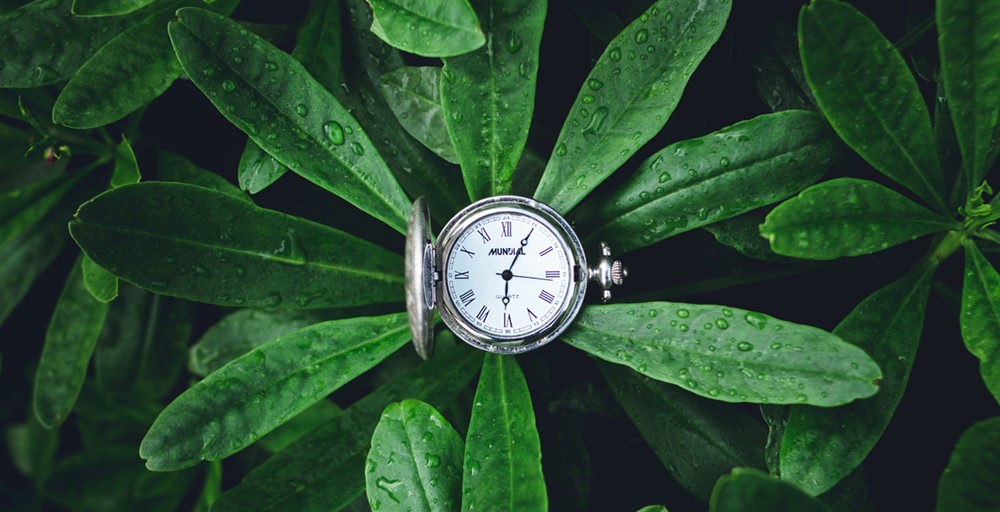Circadian Rhythm: How Plants Tell Time

Life cycle of plants commonly consist of seed, germination, becoming mature, flowering, and fruiting. Each growing stages of plants matches to the daily and seasonal changes, thus growing, flowing, and fruiting at the right time. But plants do not have a central nervous system like humans; how can they tell time and respond correctly? Similar to humans and animals, plants can measure time through circadian rhythms. This means plants don’t simply react to sunlight. The internal circadian clock regulates the rhythm and adjusts biological processes such as leaf movement and flowering accordingly. Knowing the circadian rhythms of plants enables growers to understand how plants function and provide what they need to thrive precisely. Growers can even reset the circadian rhythms of plants by providing artificial lights or adjusting other growing environments.
Confused about what is the circadian rhythm and how it can affect your plants? Learn more through this post.
What is circadian rhythm
Plants, humans, and animals can measure the time of the day through circadian rhythms. Circadian rhythms are biological cycles with periods of approximately 24 hours. Circadian rhythms of plants are regulated by a circadian clock. The circadian clock controls biological function in the 24h cycle. Therefore, although circadian rhythms are endogenous, it can be adjustable to ambient environment.
How does plant circadian rhythm work
Circadian rhythm of plants also driven by circadian clock. Plants can measure the time the predict coming changes through inter circadian clock. For plants, sugars are key to setting and maintaining the inter circadian clock. Plants are exposed to light and dark alternation. They convert sunlight energy to sugar through photosynthesis during the day. When night falls, plants produce more hormone auxin, which can control growth and development. With the increase in hormone auxin levels and dark environment, plants know it is time to stop the photosynthesis process. Instead, they metabolize the sugar and energy generated during day time. From continuously measuring the amount of sugar, plants can make relevant adjustments and synchronize with the environment including the light cycle, temperature, etc.
Do plants sleep at night
In general, humans have a circadian cycle that work at daytime and sleep at night. You might find that many plants droop and close their flowers at night. Do plants sleep at night like humans? Actually, plants cannot sleep like humans because they don’t have a central nervous system. But they respond sleep-like behaviors during the night. This means plants are still active at night. Night time is basically an opportunity for metabolism. Plants consume the energy generated through photosynthesis at daytime and put it into growth, development, and flowering. With the regulated cycle, plants are able to gather and use energy to adapt to daily and seasonal changes.
What are benefits of plant’s circadian rhythm
In short, the circadian rhythm allows plants to synchronize with environmental changes, as well as cope with adverse conditions.
- Plants absorb and store energy at daytime, and consume it for growth and development at night. Circadian rhythm allows plants to store enough energy to survive at night. They won’t prepare excessive food for short summer nights or be hungry during long winter nights.
- When the circadian rhythms of plants match to the environment, there is more chlorophyll in plants and subsequently plants can grow faster.
- Most flowering in plants is related to the length of daylight. Some plants will flower with the long daylight length, and some will form flowers when the day length is shorter than 12 hours. Circadian rhythm enables plants to flower in the right season.
- The right flowering time also allows plants to emit chemicals to attract insects for pollinators. Thus plants can bear fruit efficiently.
How can you improve plant growth with its circadian rhythm
The circadian clock regulates the biological processes that related to plant growth and development directly. It also affects the productivity and quality of plants. That means the manipulation of the circadian clock can bring huge values to improve plant yields in greenhouses, vertical farms, grow tents, etc. Correctly matching the circadian period with day/light cycles, temperature, CO2, and other factors may increase vegetative growth and enhance productivity.
Many factors are closely related to circadian rhythms. For most growers, the main concern is the timing of light and dark. The length of day and night varies with the seasons. But plants also respond differently to light color (or wavelength) and light intensity. Matching indoor growing environment to nature can achieve better quality and higher yields.
You might know that LED grow lights are helpful for mimicking natural sunrise and sunset. And some advanced LED lighting fixtures are fitted with dimmable light intensity. But not only day/night cycle and light intensity change with seasons, but also the light spectrum. A spectrum variable LED grow light is the perfect solution for matching indoor lighting conditions to nature. That is what we can offer - spectrum variable LED grow lights that have the ability to replicate natural lighting environments with adjustable intensity and light spectrum.
Here is an example of our four spectrum channels lighting:

Want to know more about the spectrum variable LED grow light?

